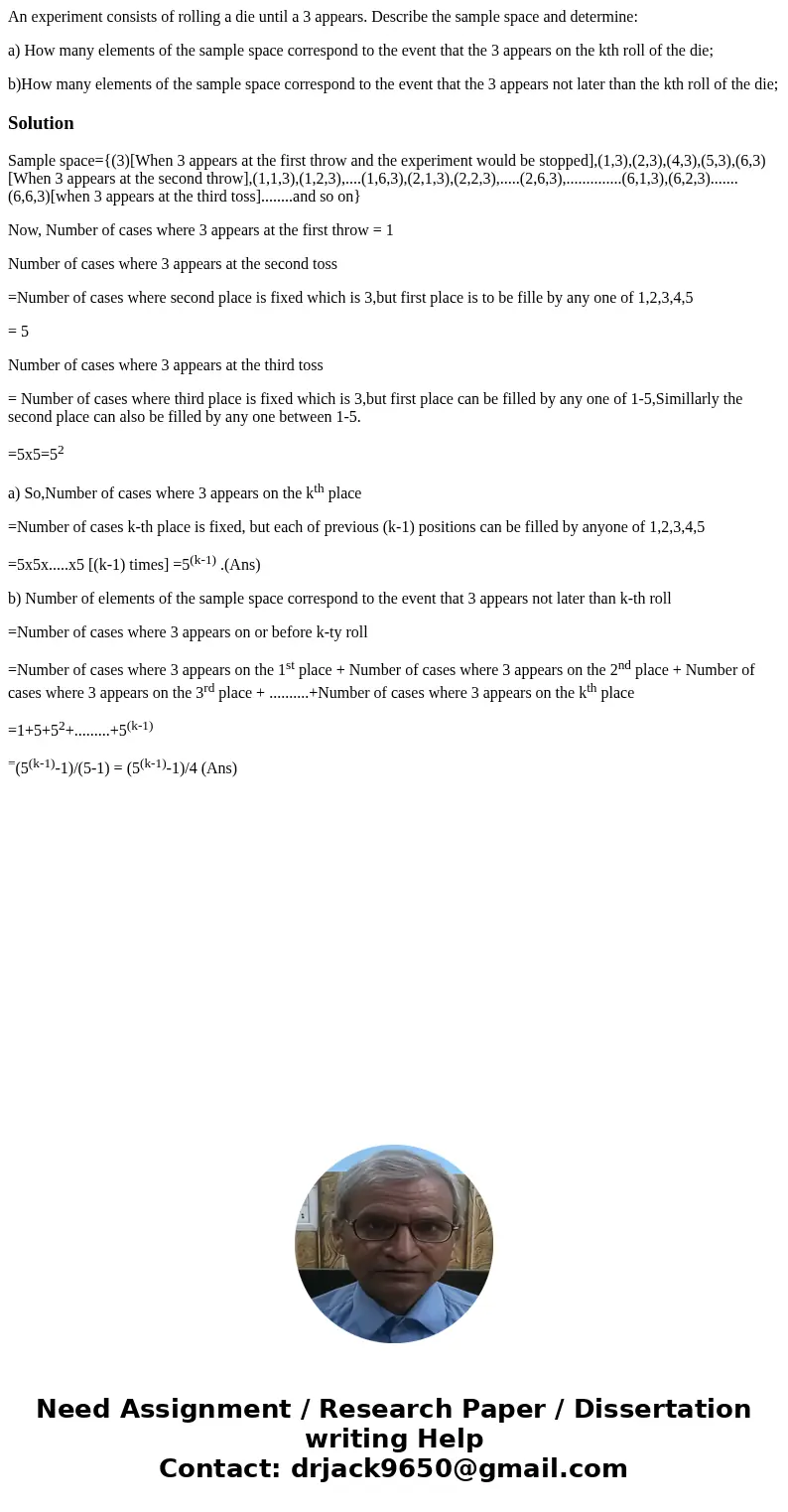An experiment consists of rolling a die until a 3 appears De
An experiment consists of rolling a die until a 3 appears. Describe the sample space and determine:
a) How many elements of the sample space correspond to the event that the 3 appears on the kth roll of the die;
b)How many elements of the sample space correspond to the event that the 3 appears not later than the kth roll of the die;
Solution
Sample space={(3)[When 3 appears at the first throw and the experiment would be stopped],(1,3),(2,3),(4,3),(5,3),(6,3)[When 3 appears at the second throw],(1,1,3),(1,2,3),....(1,6,3),(2,1,3),(2,2,3),.....(2,6,3),..............(6,1,3),(6,2,3).......(6,6,3)[when 3 appears at the third toss]........and so on}
Now, Number of cases where 3 appears at the first throw = 1
Number of cases where 3 appears at the second toss
=Number of cases where second place is fixed which is 3,but first place is to be fille by any one of 1,2,3,4,5
= 5
Number of cases where 3 appears at the third toss
= Number of cases where third place is fixed which is 3,but first place can be filled by any one of 1-5,Simillarly the second place can also be filled by any one between 1-5.
=5x5=52
a) So,Number of cases where 3 appears on the kth place
=Number of cases k-th place is fixed, but each of previous (k-1) positions can be filled by anyone of 1,2,3,4,5
=5x5x.....x5 [(k-1) times] =5(k-1) .(Ans)
b) Number of elements of the sample space correspond to the event that 3 appears not later than k-th roll
=Number of cases where 3 appears on or before k-ty roll
=Number of cases where 3 appears on the 1st place + Number of cases where 3 appears on the 2nd place + Number of cases where 3 appears on the 3rd place + ..........+Number of cases where 3 appears on the kth place
=1+5+52+.........+5(k-1)
=(5(k-1)-1)/(5-1) = (5(k-1)-1)/4 (Ans)

 Homework Sourse
Homework Sourse